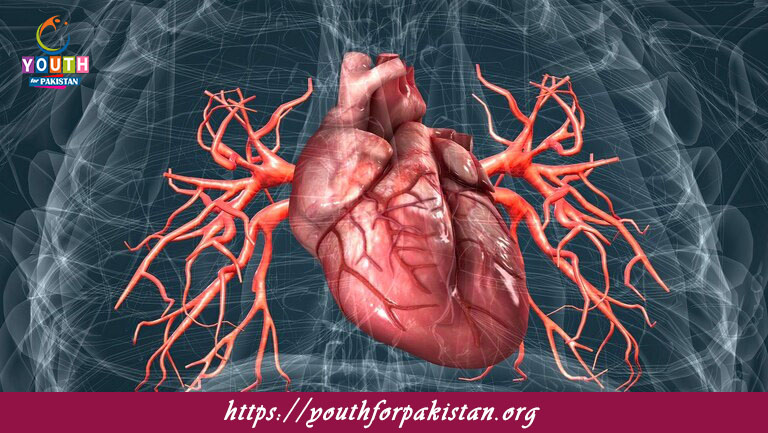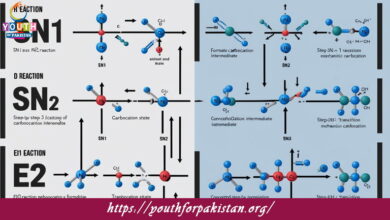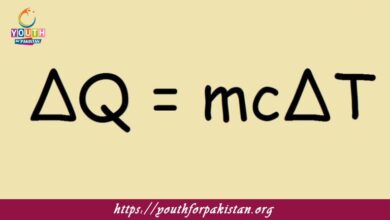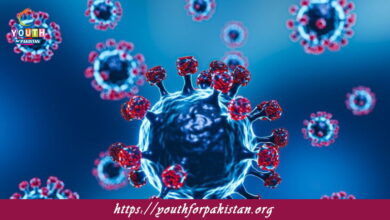Cardiovascular System MDCAT MCQs with Answers

Welcome to the Cardiovascular System MDCAT MCQs with Answers. In this post, we have shared Cardiovascular System Multiple Choice Questions and Answers for PMC MDCAT 2024. Each question in MDCAT Biology offers a chance to enhance your knowledge regarding Cardiovascular System MCQs in this MDCAT Online Test.
Which of the following is the primary function of the cardiovascular system?
a) To regulate body temperature
b) To transport nutrients, gases, and wastes
c) To produce hormones
d) To aid in digestion
What is the largest artery in the human body?
a) Pulmonary artery
b) Femoral artery
c) Aorta
d) Coronary artery
Which chamber of the heart receives oxygenated blood from the lungs?
a) Right atrium
b) Left atrium
c) Right ventricle
d) Left ventricle
What is the function of the heart’s valves?
a) To pump blood throughout the body
b) To regulate the heartbeat
c) To prevent backflow of blood
d) To produce red blood cells
Which vessel carries deoxygenated blood from the body to the heart?
a) Aorta
b) Pulmonary vein
c) Inferior vena cava
d) Pulmonary artery
Where does the exchange of gases and nutrients occur in the cardiovascular system?
a) Arteries
b) Veins
c) Capillaries
d) Aorta
What type of blood vessel carries blood away from the heart?
a) Vein
b) Artery
c) Capillary
d) Venule
Which part of the heart is responsible for pumping blood to the lungs?
a) Left ventricle
b) Right atrium
c) Right ventricle
d) Left atrium
Which heart valve prevents blood from flowing back into the left atrium?
a) Tricuspid valve
b) Mitral valve
c) Pulmonary valve
d) Aortic valve
The term “systole” refers to which phase of the cardiac cycle?
a) Relaxation of the heart muscle
b) Contraction of the heart muscle
c) Filling of the heart chambers
d) Ejection of blood into the arteries
Which part of the heart’s conduction system initiates the heartbeat?
a) Atrioventricular (AV) node
b) Sinoatrial (SA) node
c) Bundle of His
d) Purkinje fibers
What is the primary role of the coronary arteries?
a) To supply blood to the lungs
b) To supply blood to the heart muscle
c) To carry deoxygenated blood to the right atrium
d) To drain blood from the liver
Which component of blood helps in clotting?
a) Erythrocytes
b) Leukocytes
c) Platelets
d) Plasma
What is the normal range for resting heart rate in adults?
a) 60-100 beats per minute
b) 40-60 beats per minute
c) 100-140 beats per minute
d) 140-180 beats per minute
Which of the following is NOT a function of the cardiovascular system?
a) Transporting hormones
b) Regulating body temperature
c) Removing cellular waste
d) Producing digestive enzymes
In which vessel does the exchange of gases occur in the lungs?
a) Bronchioles
b) Alveoli
c) Pulmonary veins
d) Trachea
What is the primary function of veins?
a) To transport blood away from the heart
b) To exchange gases and nutrients
c) To return blood to the heart
d) To regulate blood pressure
What is the name of the valve located between the left atrium and the left ventricle?
a) Tricuspid valve
b) Bicuspid valve
c) Aortic valve
d) Pulmonary valve
Which part of the heart receives deoxygenated blood from the body?
a) Right atrium
b) Left atrium
c) Right ventricle
d) Left ventricle
What is the function of the pulmonary arteries?
a) To carry oxygenated blood to the body
b) To carry deoxygenated blood from the heart to the lungs
c) To drain blood from the brain
d) To supply blood to the liver
Which blood vessels are known for their thin walls and high permeability?
a) Arteries
b) Veins
c) Capillaries
d) Venules
What is the primary role of the aorta?
a) To carry oxygenated blood from the heart to the body
b) To carry deoxygenated blood to the lungs
c) To drain blood from the heart
d) To supply blood to the brain
Which structure prevents backflow of blood into the ventricles?
a) Aortic valve
b) Tricuspid valve
c) Mitral valve
d) Pulmonary valve
During which phase of the cardiac cycle do the ventricles contract?
a) Diastole
b) Systole
c) Atrial contraction
d) Ventricular relaxation
Which vessel carries blood from the heart to the lungs?
a) Pulmonary artery
b) Aorta
c) Carotid artery
d) Jugular vein
What is the primary function of the heart’s right ventricle?
a) To pump oxygenated blood to the body
b) To pump deoxygenated blood to the lungs
c) To receive deoxygenated blood from the body
d) To receive oxygenated blood from the lungs
Which heart chamber has the thickest muscular walls?
a) Right atrium
b) Left atrium
c) Right ventricle
d) Left ventricle
What does the term “blood pressure” refer to?
a) The pressure within the veins
b) The pressure within the arteries
c) The pressure in the heart chambers
d) The pressure in the capillaries
Which layer of the heart is the outermost?
a) Endocardium
b) Myocardium
c) Epicardium
d) Pericardium
Which of the following is a function of the cardiovascular system?
a) Absorption of nutrients
b) Filtration of waste products
c) Regulation of body temperature
d) Production of hormones
Which component of the cardiovascular system is responsible for nutrient and gas exchange?
a) Arteries
b) Veins
c) Capillaries
d) Venules
What is the primary function of the left atrium?
a) To receive deoxygenated blood from the body
b) To pump oxygenated blood to the body
c) To receive oxygenated blood from the lungs
d) To pump deoxygenated blood to the lungs
Which structure carries blood from the lungs back to the heart?
a) Pulmonary arteries
b) Pulmonary veins
c) Aorta
d) Inferior vena cava
What is the role of the pericardium?
a) To contract and relax the heart muscle
b) To prevent backflow of blood
c) To provide a protective sac around the heart
d) To regulate heart rate
What is the role of the atrioventricular (AV) node in the heart?
a) To initiate the heartbeat
b) To conduct impulses from the atria to the ventricles
c) To regulate blood flow in the heart
d) To pump blood to the lungs
What type of blood vessel has the thickest walls?
a) Vein
b) Capillary
c) Artery
d) Venule
Which of the following best describes the function of capillaries?
a) To transport blood quickly to the heart
b) To exchange nutrients and waste products with tissues
c) To carry oxygenated blood to the lungs
d) To drain blood from the heart
How does blood pressure typically change from the arteries to the veins?
a) It increases
b) It remains constant
c) It decreases
d) It fluctuates
Which blood vessel carries oxygen-rich blood away from the heart to the rest of the body?
a) Pulmonary artery
b) Aorta
c) Jugular vein
d) Inferior vena cava
What is the primary role of the right atrium?
a) To pump oxygenated blood to the body
b) To receive deoxygenated blood from the body
c) To receive oxygenated blood from the lungs
d) To pump deoxygenated blood to the lungs
Which of the following is the correct sequence of blood flow through the heart?
a) Right atrium → Right ventricle → Left atrium → Left ventricle
b) Left atrium → Left ventricle → Right atrium → Right ventricle
c) Right atrium → Left atrium → Right ventricle → Left ventricle
d) Right atrium → Right ventricle → Left ventricle → Left atrium
What causes the “lub-dub” sound of the heartbeat?
a) The contraction of the heart muscle
b) The opening and closing of the heart valves
c) The flow of blood through the veins
d) The movement of the diaphragm
Which part of the heart’s conduction system is responsible for coordinating the contraction of the ventricles?
a) Sinoatrial (SA) node
b) Atrioventricular (AV) node
c) Bundle of His
d) Purkinje fibers
What is the purpose of the cardiac cycle?
a) To regulate blood pressure
b) To maintain oxygen levels in the blood
c) To ensure continuous blood flow through the heart
d) To initiate the heartbeat
Which type of blood vessel has valves to prevent backflow of blood?
a) Artery
b) Vein
c) Capillary
d) Venule
What is the main function of red blood cells in the cardiovascular system?
a) To fight infection
b) To carry oxygen to tissues
c) To help in clotting
d) To remove carbon dioxide
What effect does exercise typically have on heart rate?
a) It decreases heart rate
b) It has no effect on heart rate
c) It increases heart rate
d) It causes irregular heartbeats
Which part of the heart is responsible for receiving blood from the lungs?
a) Right ventricle
b) Right atrium
c) Left atrium
d) Left ventricle
Which artery supplies blood to the brain?
a) Carotid artery
b) Femoral artery
c) Pulmonary artery
d) Subclavian artery
What is the primary role of the left ventricle?
a) To receive deoxygenated blood from the body
b) To pump oxygenated blood to the lungs
c) To pump oxygenated blood to the body
d) To receive oxygenated blood from the lungs
Which type of blood vessel is involved in the exchange of nutrients and waste products between blood and tissues?
a) Arteries
b) Veins
c) Capillaries
d) Venules
Which blood vessel returns deoxygenated blood from the upper body to the heart?
a) Inferior vena cava
b) Pulmonary veins
c) Superior vena cava
d) Aorta
How does the cardiovascular system contribute to temperature regulation?
a) By adjusting blood flow to the skin
b) By absorbing heat from the environment
c) By producing sweat
d) By changing heart rate
If you are interested to enhance your knowledge regarding Physics, Chemistry, Computer, and Biology please click on the link of each category, you will be redirected to dedicated website for each category.





